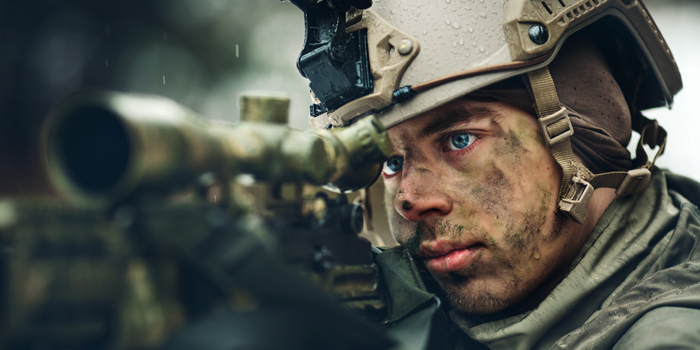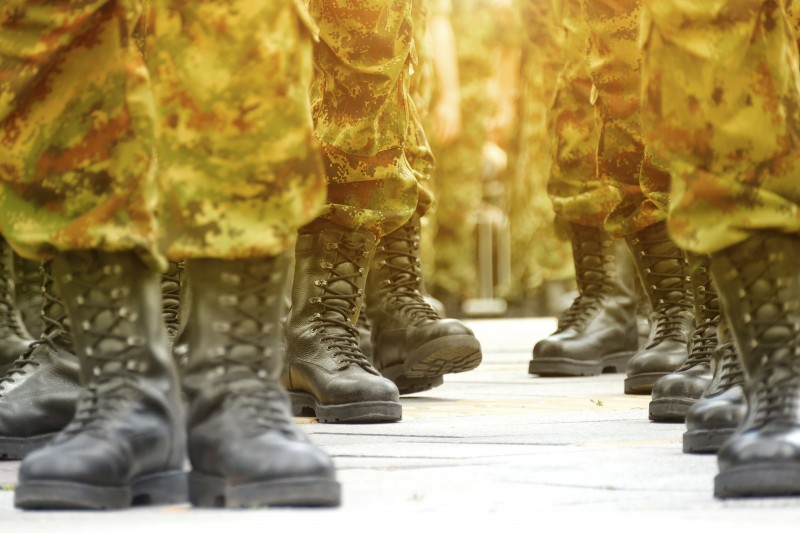
In my last article, A Meathead's Take on the Army Combat Readiness Test, I gave my opinion on how the test would impact soldiers and overall combat effectiveness. One of my main points of descent was the lack of experience that many squad and platoon leaders may have with training soldiers on how to properly perform and train for such a new and more complex test. Some of the glaring issues I see is that certain movements in the test, while not extremely complicated, can be hazardous to soldiers without proper instruction, or proper periodization of training leading up to the test.
RECENT: A Meathead’s Take on the Army Combat Readiness Test
I’m sure a lot of units have their token meatheads amongst their ranks, so my first bit of advice, and the advice of SFC Anthony Fuhrman, would be to search within your ranks for people who are well versed in strength and conditioning. Maybe I’m looking through rose-colored glasses, but I’d like to believe, and hope, that strength training has become an integral part of most soldiers’ lives. Being a stronger soldier makes you a better soldier. There’s really no way around that. Being able to lift and move odd objects, equipment, and one another is imperative to the combat effectiveness of a soldier, especially when we’re talking about extracting casualties in the combat theater. SFC Fuhrman laid it out very well:
“Soldiers are paid athletes at heart. Without fitness we cannot execute combat operations, and there needs to be an intrinsic re-evaluation of how much emphasis is placed on it, especially in combat battalions. Look at fitness as part of the mission. We get hung up on accomplishing tasks given in oppress, fragos, and warnos, that we often neglect the most important aspect of soldiering…that a healthy fit Soldier is a smart, lethal Soldier. And this is at all levels from Private to Colonel.”
Unfortunately, I can’t outline a specific training program for leaders to implement because the schedule, task, and equipment available from unit to unit can be drastically different. Even simple things like who is in command at the moment can impact how much or how little running volume a company-level unit may endure. When you add in field time, airborne operations, deployments, etc., setting up a training program over an extended period of time can become daunting. However, what I can do is offer some advice to leaders that may help them to shape their training programs to effectively train their soldiers to be stronger, faster, and more efficient.
Image credit: Dragan Zivkovic © 123rf.com
When setting up training, there are a few things that should be taken into account.
More is NOT Better
The first, and most glaring one to me, is that leaders need to shy away from the idea that more is better and that harder is better. The days of running soldiers into the ground are nothing short of antiquated. Let them get broken down in basic training. You’re there to build them into an effective fighting or support force.
Volume, Intensity, and Frequency
Second, leaders need to take into account three main training variables that every good program has: volume, intensity, and frequency.
Volume, in this scenario, is the total amount of work that the soldiers will perform during training. However, other outside stresses should also be taken into account. What sort of work week is your unit having? Are you just picking weeds in the motor pool, going through CONNEXES, or performing late-night airborne operations? These sorts of things can add to, or detract from, the recovery if a soldier has had a grueling training session the morning before, or the day after. Account for all stressors, and adjust how much actual volume, or total work, the soldier(s) will be performing during PT.
Intensity is how hard the actual training session is based on objective feedback or weight on the bar. Is a person going for 80% of his or her max on a trap bar deadlift? 90%? How many reps will he or she be doing at that weight? What was the training that week like leading up to that sort of high-intensity training session? Are fartleks on the agenda? If the volume and intensity are consistently high, this can lead to a breakdown in form and mechanics, which can result in injury.
Frequency will be how often you’re incorporating a movement pattern, conditioning element, or general cardio into training. If you’re running 20-30 miles a week but only lifting once, you may be in for some heartbreak when it comes to testing strength. Conversely, if you’re lifting at a high intensity, with the same movement, day in and day out, you’re on a surefire course for injury.
These three variables will ultimately make or break your training plan, as well as the effectiveness of that plan for developing outstanding soldiers, but they must be implemented on a sliding scale so that you’re training optimally and so that soldiers can recover and be able to perform their missions.
Personally, if I were to set up a program, I would focus on a moderately high intensity, more frequency (but not everyday), and a lower volume in the weight room. Think triples and fives, and let the running be most of your volume.
That might look something like this:
Monday
- Trap Bar Deadlift: Work up to a heavy 3
- Squats: 3x5
- Accessory
- Short Fast Run
Tuesday
- Bench: Work up to a heavy 3
- Push-ups: 3 x AMRAP
- Pull-ups: 3-5 sets x AMRAP
- Ab Work
Wednesday
- Slower-paced, medium-distance run or ruck
Thursday
- Trap Bar Deadlift or Squat: 3x5
- Bench: 5x5
- Upper Pulling Accessory
- Ab Work
Friday
- Odd Object Carries and Drags (Farmers, sled drags, etc)
- Long Run
Since most units don’t really allow for rest days other than the weekend, I’m looking for the biggest-bang-for-my-buck exercises that I could be able to fit into a morning training session. Also, I’m working based on the assumption that Fridays are company/battery runs, which tend to be longer in duration. The bigger movements like deadlifts and benches are higher intensity and more frequent, while accessories and runs take up most of the volume.
Remember, this may not work with what you have available, so it’s important to come up for a plan for your soldiers based on the time and resources you have available.
The last piece of advice I want to give is if you are a leader who is going to be training soldiers, seek out as much education as you can. Go to seminars, read elitefts, get some sort of certification with hands-on training, and just learn as much as you can. Use references like Supertraining by Mel Siff and Yuri Verkhoshansky, elitefts, Science, and Practice of Strength Training, etc. Whatever you do, just make sure you’re going into it with a plan.
Header image credit: kaninstudio © 123rf.com












My thinking is that the average military member would do well to try 2 days of this program, and add another training day to program every 3rd week.
I understand what you're saying. I probably could have communicated my intent a little better. That was just a "sample" week of how I, in my experience as a non commissioned officer, would be set up a group workout during PT hours in the morning with the equipment I would have had available.
Unfortunately, most units and platoons are at the mercy of their command, so trying to work around what they have in mind for PT can get complicated. Also, I think the intensity in a setting like that would be low when you're trying to push 5-7 soldiers through in the hour allotted for training.
With the different tasks and training each unit goes has, I can only generalize. A short fast run for some units may be 5-8 miles, while other could be 2-3.
Ultimately, my preferred method would be a conjugate type of training, but I want it to be as simple and as applicable as possible for leaders to develop a system that can work within the parameters they have. I'd love it if leaders had more freedom to take rest days and let soldiers recover.
I appreciate your input! I'd definitely be willing to talk further with you if you want! I'm always open to new ideas.
I used to have these grand ideas that I would implement my training idealogies and create a unit of super Soldiers. Over time, I resigned to 2 things.
1) The majority of Soldiers are going to lift weights on their own time, so they'll test fine on pushups and situps, but very few will run. Therefore, for PT, we run.
2) As a leader, you just can't really improve a Soldiers physical fitness with morning PT. They have to do it on their own. Getting Soldiers up to fitness standard should have been taken care of during BCT. After that, it's an individual responsibility to maintain. Morning PT is mostly designed to get the blood flowing and assist Soldiers in maintaining their current fitness level. Again, therefore, for PT, we run.
I really think the best thing a unit can do is run every day for PT. It's where almost all Soldiers struggle on the APFT. Keep the intensity (pace, distance) reasonable to avoid overuse injury, and just hammer away at it with frequency. Monday, legs are fresh, 1 mile sprint, then other calisthenics. Every other day, between 2-3 miles. Friday, like you said, Airborne Shuffle.
OH, also, not sure if you were doing the PRT warm-ups when you were in. But make that 3-count pushup drill really slow and go to 10 instead of the standard 5 reps. The difference in Time Under Tension is crazy, and that's really what the APFT push-up event is al about anyways. Doing that every day makes a difference.
Also the prone row. You have to re-teach Soldiers how to do it, because they think it's a Superman, and lift their feet from the ground when they do it, and all it does is work the lumbar region. Have to keep the shoelaces pressed to the ground, and really work that thoracic extension. And then it's rear delts, lower traps, rhomboids, supraspinatus, just a great exercise everyone should be doing, especially a population that loves to bench all day.
Would you use the conjugate system for someone preparing for selection (BUD/S) as well? What, if any, modifications would you make? Thank you.